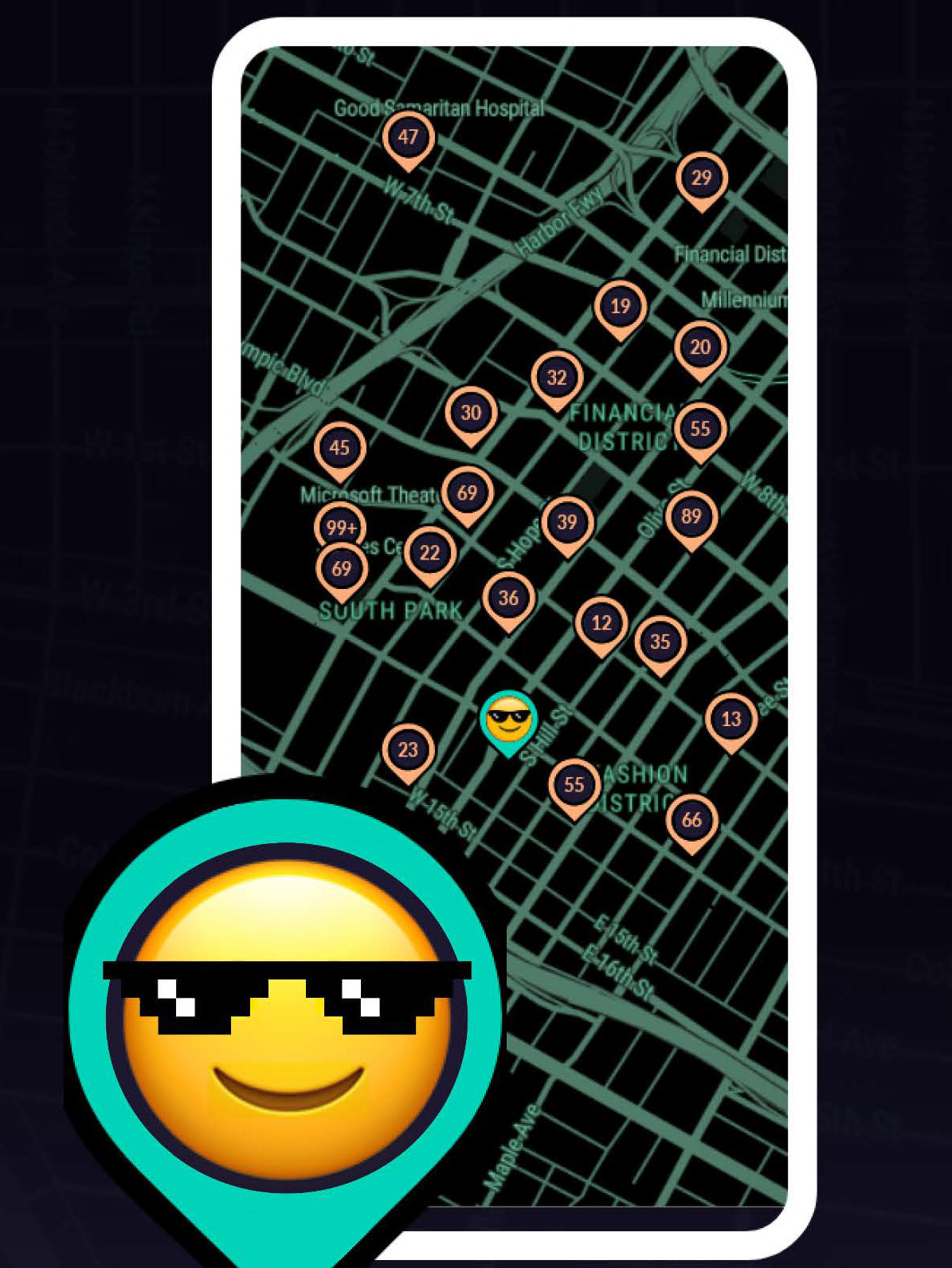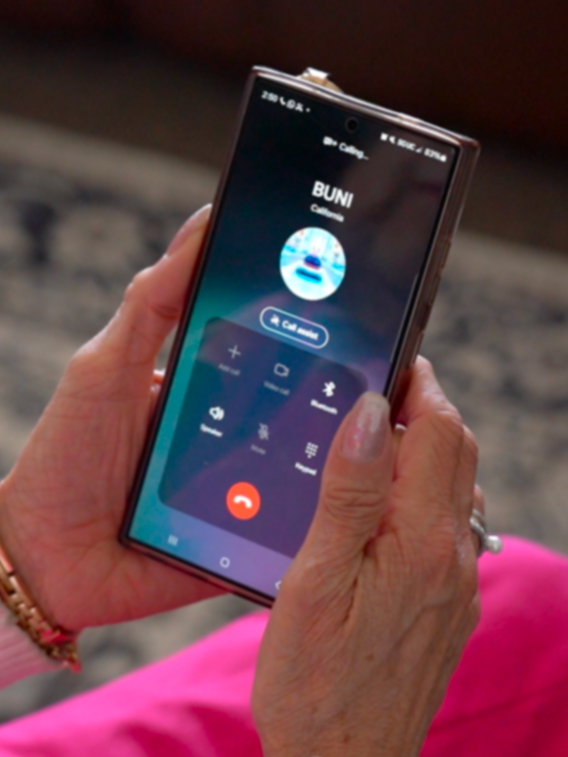Context
Our team developed a rebranding and marketing strategy to enhance audience engagement and expand ALOUD's reach. I contributed through UX research, supported content strategy, and led the UX writing for our pitch.
Academic Project
Role
UX Researcher, Content Strategist
Timeframe
Fall 2024 (16 weeks)
Team
Darren Lau, Marketing Strategist
Giorgio Tandera, Graphic Designer
Thanh Quach, Project Manager
Project Brief
ALOUD is a program of the Library Foundation of Los Angeles that hosts free events with influential speakers to foster public dialogue. While the program had a loyal audience, it wasn’t reaching younger or more diverse communities, and its branding lacked emotional appeal. The goal was to develop a marketing and branding strategy that could expand visibility, grow engagement, and provide scalable tools within LFLA’s limited staff and budget.
The Challenge
Problem
ALOUD lacked a clear strategy for engaging new audiences. Its branding resonated with existing attendees but did not connect with younger or more diverse communities. Social media, especially Instagram, was underutilized, and limited staff and budget made it difficult to deliver consistent, dynamic marketing efforts. Without a strategy that balanced creativity with sustainability, the program risked stagnating in reach and relevance.
Insight
Our research revealed two key opportunities. First, authentic storytelling and event-specific messaging were powerful ways to build emotional connections with audiences. Attendees valued the events deeply but felt that the marketing didn’t reflect that energy. Second, Instagram had untapped potential for reaching younger demographics through thoughtful, interactive, and real time content like stories. These insights reframed the challenge: how might ALOUD use storytelling and lightweight digital tools to expand reach while staying within resource constraints?
Solution
We created a marketing and branding strategy that put storytelling at the center and made execution feasible with scalable tools. The strategy emphasized Instagram stories and posts tied to specific events, with targeted calls to action to drive registration and interaction. To support sustainability, we recommended AI-powered tools such as Descript for quick video editing, Vistasocial for scheduling, and Make.com for automation. This combination of authentic content and streamlined workflows enabled ALOUD to grow engagement without exceeding staff or budget capacity.
Process
Research and Observation
We immersed ourselves in ALOUD events and spoke directly with attendees through surveys and informal conversations. This showed us that while participants valued the intellectual and emotional experience, the program’s marketing didn’t capture that energy.
Survey statistics from ALOUD attendees.
Netnogrophy
I led online observation of ALOUD’s community presence, analyzing Instagram and public forums. This revealed branding inconsistencies and missed opportunities to highlight event themes in real time.
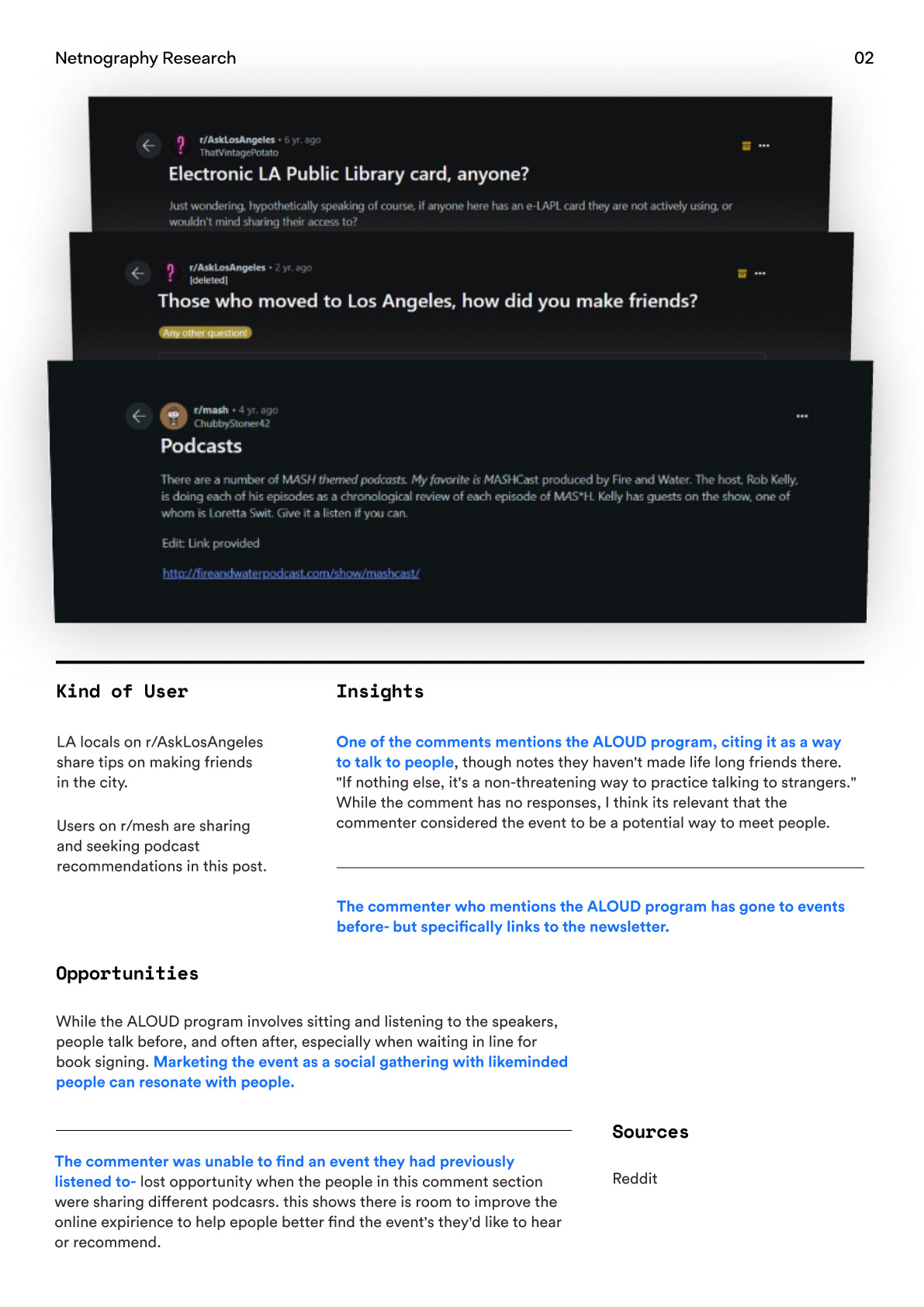
Netnogrophy 1
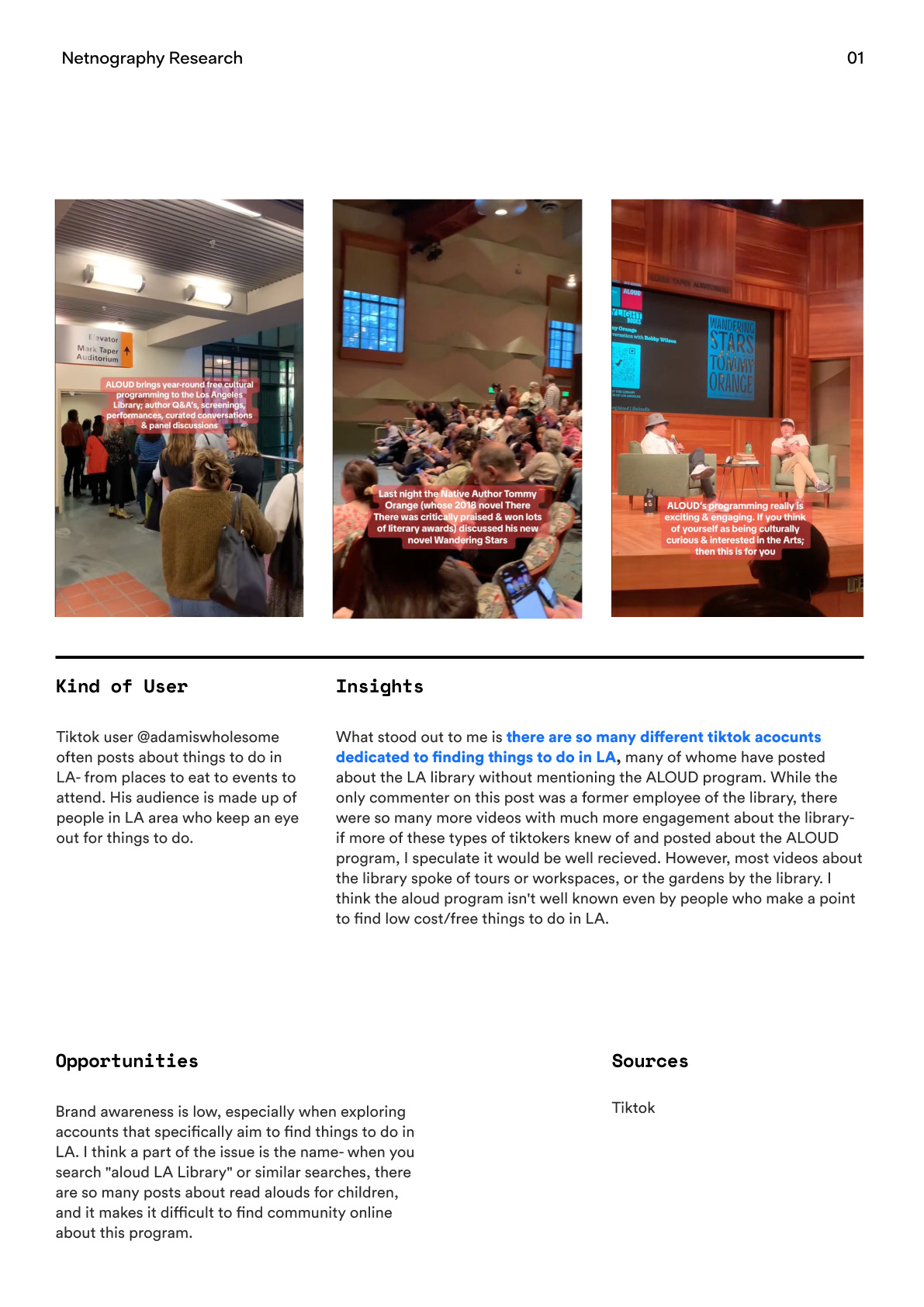
Netnogrophy 2
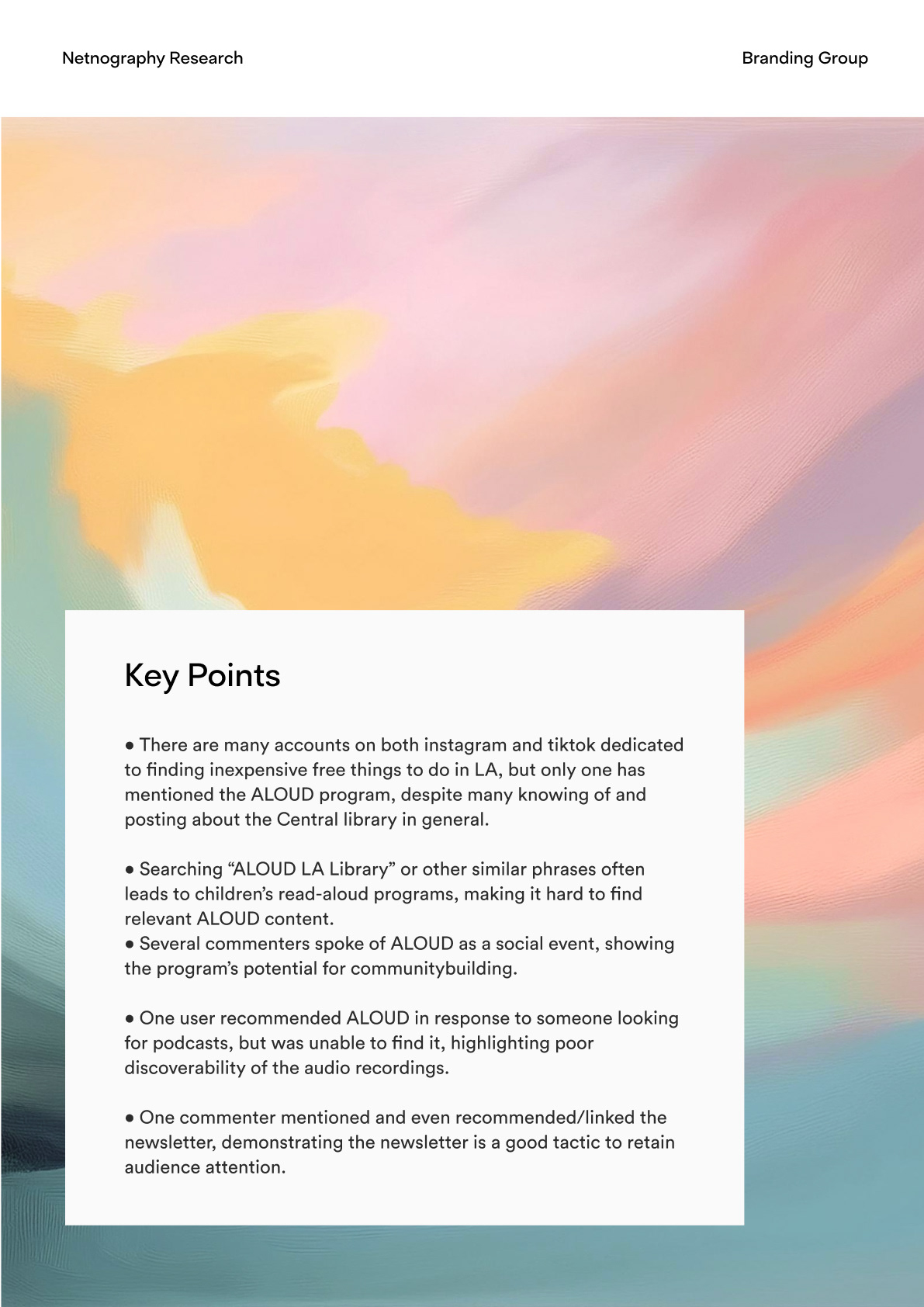
Netnogrophy Key Points
Expert Interviews
We interviewed marketing professionals and the Director of Marketing and Communications at LFLA. Their feedback underscored the need for authenticity: engagement would only grow if audiences felt the content reflected their values and experiences.
Bree Von Faith
Bree Von Faith
SVP of Marketing and Communications
"Authentic storytelling is essential for connecting with the community; it’s about reflecting genuine experiences that resonate with people."
Vy Pham
Director of Marketing and Communications for LFLA
"Our focus should be on engaging diverse communities through meaningful content that reflects their values and interests."
Vy Pham
Customer Journey Map
We mapped the attendee journey from discovery to post-event follow-up. This highlighted gaps in visibility at the discovery stage and weak engagement after events, two areas where social media storytelling could have the most impact.
Customer Journey Map
Ideation & Stakeholder Alignment
We proposed two strategies: an email funnel for updates and a social media takeover. Stakeholders favored the takeover but raised concerns about staff capacity. To address this, we introduced AI tools to automate repetitive work, ensuring the strategy could scale.
AI tool recommendations
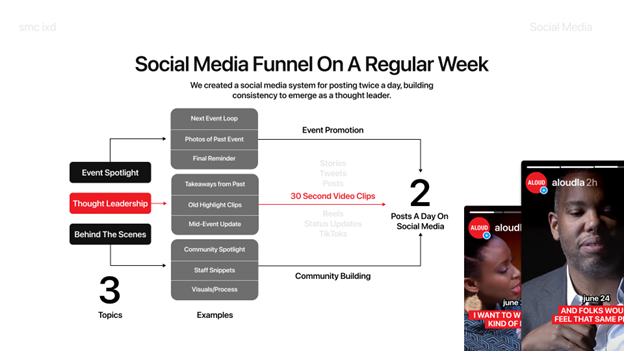
Social Media Funnel On A Regular Week
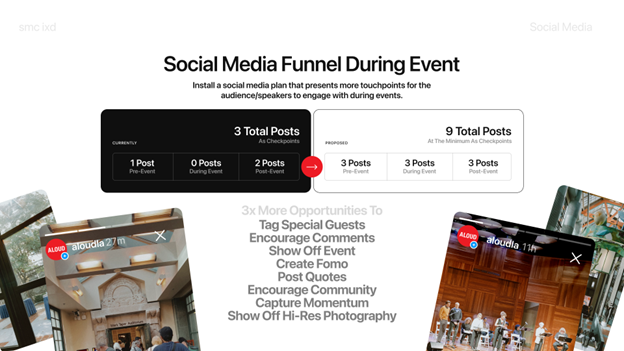
Social Media Funnel During Event
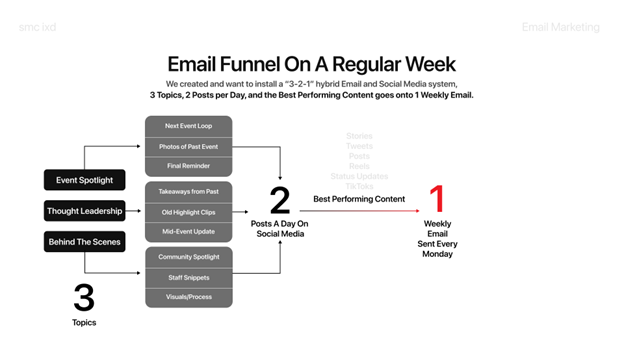
Email Funnel On A Regular Week
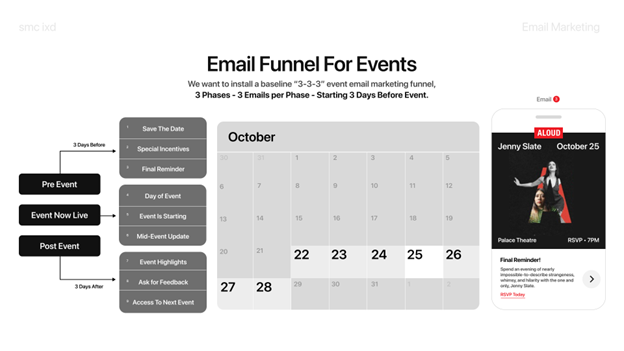
Email Funnel For Events
Results
We piloted the strategy with a social media takeover of ALOUD’s Instagram account for the Roman Year: A Memoir event.
• Instagram engagement increased by 42%, with stories being the primary driver.
• Event registration clicks rose by 15%, particularly from younger users.
• After the event, the speaker shared our branded content with their audience, expanding ALOUD’s reach even further.
These results validated our strategy: storytelling + scalable tools could extend ALOUD’s reach without overwhelming staff capacity.
Results from Social Media Takeover
Reflection
This project reinforced that effective design strategy is as much about narrative and constraints as it is about channels or assets. By aligning storytelling with scalable tools, we created a plan that was both inspiring and executable within LFLA’s limits. The social media takeover demonstrated how resource-sensitive organizations can still achieve strong engagement through authentic content and lightweight automation. Moving forward, I’d refine handoff practices with guest speakers to better tap into their audiences and test more cross platform engagement strategies.
